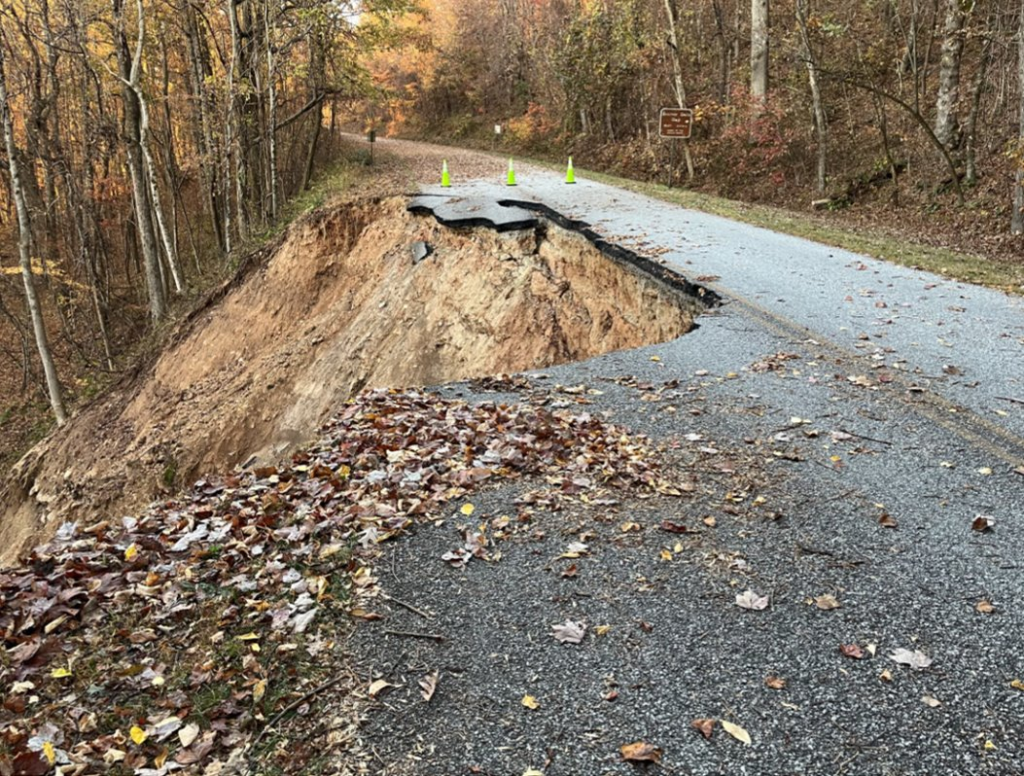
This image from NPS (The National Park Service) shows the destruction on a part of the Blue Ridge Parkway. We can see a crew out there clearing debris. (https://www.nps.gov/blri/planyourvisit/helene-recovery-projects-at-a-glance.htm)

This image, also from NPS is a prime example of the destruction caused by the ground giving way underneath roads in western NC. (https://www.nps.gov/blri/planyourvisit/helene-recovery-projects-at-a-glance.htm)